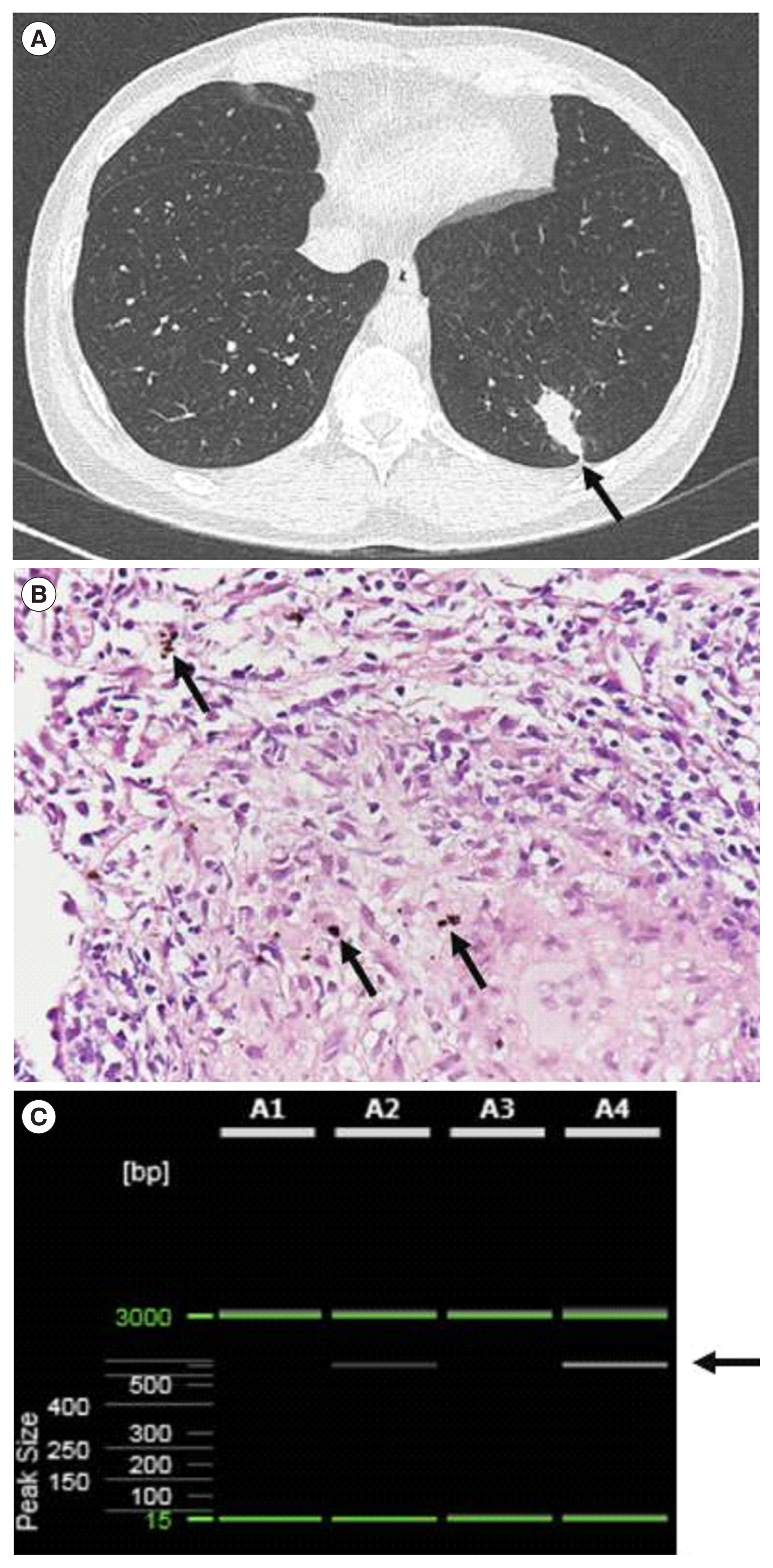Ann Lab Med.
2021 Jan;41(1):120-122. 10.3343/alm.2021.41.1.120.
A Case of Localized Fungal Pneumonia Caused by Rhodotorula mucilaginosa in an Immunocompetent Patient
- Affiliations
-
- 1Departments of Pathology, Hallym University Dongtan Sacred Heart Hospital, Hallym University College of Medicine, Hwaseong, Korea
- 2Departments of Internal Medicine, Hallym University Dongtan Sacred Heart Hospital, Hallym University College of Medicine, Hwaseong, Korea
- 3Departments of Radiology, Hallym University Dongtan Sacred Heart Hospital, Hallym University College of Medicine, Hwaseong, Korea
- 4Departments of Thoracic Surgery, Hallym University Dongtan Sacred Heart Hospital, Hallym University College of Medicine, Hwaseong, Korea
- 5Departments of Laboratory Medicine, Hallym University Dongtan Sacred Heart Hospital, Hallym University College of Medicine, Hwaseong, Korea
- KMID: 2512742
- DOI: http://doi.org/10.3343/alm.2021.41.1.120
Figure
Reference
-
1. Wirth F, Goldani LZ. Epidemiology of Rhodotorula: an emerging pathogen. Interdiscip Perspect Infect Dis. 2012; 2012:465717.2. Tuon FF, Costa SF. Rhodotorula infection. A systematic review of 128 cases from literature. Rev Iberoam Micol. 2008; 25:135–40.3. Fischer J, Hamacher L, Fries J, Hallek M, Cornely OA, Kochanek M, et al. Rhodotorula mucilaginosa as a cause of recurrent pulmonary infection and liver infiltration in a patient with CLL. Ann Hematol. 2016; 95:1569–70.4. Guarner J, Brandt ME. Histopathologic diagnosis of fungal infections in the 21st century. Clin Microbiol Rev. 2011; 24:247–80.
Article5. CLSI. Interpretive criteria for identification of bacteria and fungi by targeted DNA sequencing. 2nd ed. CLSI MM18. Wayne, PA: Clinical and Laboratory Standards Institute;2018.6. Bae TW, Lee J, Cho YG, Kim DS, Choi SI, Lee HS. Sepsis due to Rhodotorula mucilaginosa in a patient with advanced non-small cell lung cancer. Lab Med Online. 2016; 6:102–5.7. Hong HK, Kim YM, Kim SD, Bae CW, Lee HJ. A case of Rhodotorula mucilaginosa peritonitis undergoing continuous ambulatory peritoneal dialysis in a neonate with acute renal failure. Neonatal Med. 2003; 10:94–8.8. Kim HA, Hyun M, Ryu SY. Catheter-associated Rhodotorula mucilaginosa fungemia in an immunocompetent host. Infect Chemother. 2013; 45:339–42.
- Full Text Links
- Actions
-
Cited
- CITED
-
- Close
- Share
- Similar articles
-
- Catheter-Associated Rhodotorula mucilaginosa Fungemia in an Immunocompetent Host
- A Case of Rhodotorula Mucilaginosa Peritonitis undergoing Continuous Ambulatory Peritoneal Dialysis in a Neonate with Acute Renal Failure
- Sepsis Due to Rhodotorula mucilaginosa in a Patient with Advanced Non-Small Cell Lung Cancer
- A Case of Fungemia due to Rhodotorula Glutinis with Liver Cirrhosis
- A Case of Scedosporium Apiospermum Pneumonia in an Immunocompetent Patient


